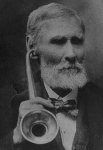Uh no...
To put 70PSI through a 1/2" air line you need about 38 Cubic Feet per Minute (CFM) of compressed air capacity (storage/compression). The video shows three feed lines of at least 1/2" going into that turbine, but they are more likely 3/4" lines (about 57CFM @ 70psi). 114 - 171CFM
is a butt-load of compressor!!! Here is a 125CFM @ 90psi rotary screw compressor from IR - it's $17,000, and runs on a 30HP (22.37kW) motor. This means if the video author had one of the more efficient high volume compressors to work with, his power generation was only 44.7% efficient (>50% was simply "lost" as waste energy in transmission and conversion).
Let's also take a more serious look at the compressor - it's 6 feet tall x 6 feet long x 3 feet deep (tank diameter), and literally weighs in at nearly a ton (1,881lbs). That's a fast way to turn a deuce into a 1.5 ton truck

. This is just the compressor we're talking about, too. If you needed that on a truck, you'd still have to make the power to
RUN the compressor. Last time I checked, a 30kW generator head is not small or light (and if you had 30kW of power generation to run this, why not take the easy-out and run an electric-powered Air-Con?). Okay, and you could argue that you just put the compressor on the engine - that's 30HP demand out of an engine on the M36 that left the factory with 127HP, or roughly 23.5% of the total engine HP just going to compressing air, and that power needs to come from burning fuel...
Youtube videos like this are known for touting a specific device, without looking at its entire "life-support system". The laws of thermodynamics are more like the law of gravity than the laws of the US Government - someone is always watching/enforcing, and those who argue with them are supposed to be for our amusement
![Thumbs Up [thumbzup] [thumbzup]](https://www.steelsoldiers.com/images/smilies/icon_smile_thumzup.gif) https://www.youtube.com/watch?v=p_4h_eZLCZQ
https://www.youtube.com/watch?v=p_4h_eZLCZQ
Best thing the OP can do is reduce the cooling demand FIRST, then work back from that to figure out how much cooling they require for their comfort level, then figure out how to get that... It's the same way that buildings are designed NOW.




